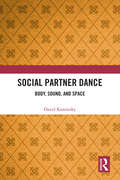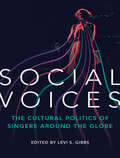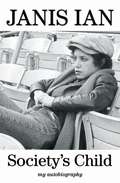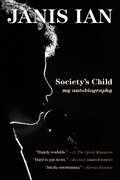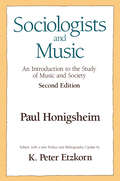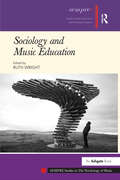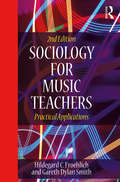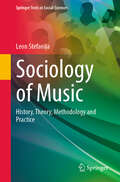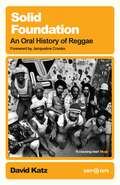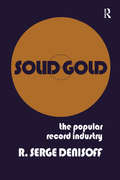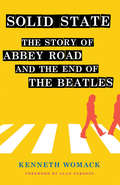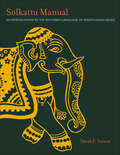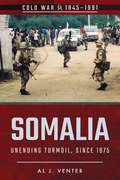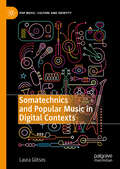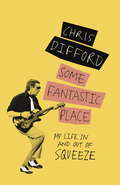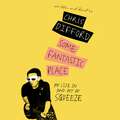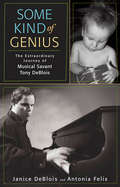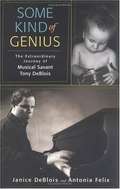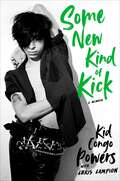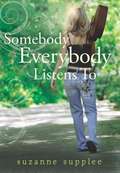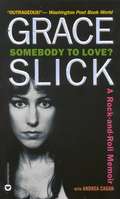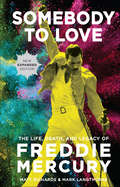- Table View
- List View
Social Partner Dance: Body, Sound, and Space
by David KaminskySocial Partner Dance: Body, Sound, and Space is an ethnographic theory of social partner dancing built on participant observation and interviews with instructors of tango, lindy hop, salsa, blues, and various other forms. The work establishes a general analytical language for the study of these dances, based on the premise that a thorough understanding of any lead/follow form must consider in depth how it manages the four-part relationship between self, partner, music, and surroundings. Each chapter begins with a brief vignette on a distinct dance form and explores the focused worlds of partnered dancing done for the joy and entertainment of the dancers themselves. Grounded intellectually in embodiment studies and sensory ethnography, and empirically in ethnographic fieldwork, Social Partner Dance promotes scholarship that understands the social, cultural, and political functions of partner dance through its embodied practice.
Social Voices: The Cultural Politics of Singers around the Globe
by Elijah Wald John Lie Andrew Simon Kwame Dawes Nancy Guy Anthony Seeger Ruth Hellier Treva B. Lindsey Eric Lott Natalie Sarrazin Jeff Todd Titon Michael K Bourdaghs Carol Silverman Katherine Meizel Carol Muller Christina D AbreuSingers generating cultural identity from K-Pop to Beverly Sills Around the world and across time, singers and their songs stand at the crossroads of differing politics and perspectives. Levi S. Gibbs edits a collection built around the idea of listening as a political act that produces meaning. Contributors explore a wide range of issues by examining artists like Romani icon Esma Redžepova, Indian legend Lata Mangeshkar, and pop superstar Teresa Teng. Topics include gendered performances and the negotiation of race and class identities; the class-related contradictions exposed by the divide between highbrow and pop culture; links between narratives of overcoming struggle and the distinction between privileged and marginalized identities; singers’ ability to adapt to shifting notions of history, borders, gender, and memory in order to connect with listeners; how the meanings we read into a singer’s life and art build on one another; and technology’s ability to challenge our ideas about what constitutes music. Cutting-edge and original, Social Voices reveals how singers and their songs equip us to process social change and divergent opinions. Contributors: Christina D. Abreu, Michael K. Bourdaghs, Kwame Dawes, Nancy Guy, Ruth Hellier, John Lie, Treva B. Lindsey, Eric Lott, Katherine Meizel, Carol A. Muller, Natalie Sarrazin, Anthony Seeger, Carol Silverman, Andrew Simon, Jeff Todd Titon, and Elijah Wald
Society's Child: My Autobiography
by Janis IanGrammy Award-winning singer and songwriter Janis Ian's memoir of her more than forty years in the music business. Janis Ian was catapulted into the spotlight in 1966 at the age of fifteen when her soul-wrenching song "Society's Child" became a national hit. An intimate portrait of an interracial relationship, "Society's Child" climbed the charts despite the fact that many radio stations across the country refused to play it because of its controversial subject matter. But this was only the beginning of a long and illustrious career. In this fascinating memoir of her life in the music business, Ian chronicles how she did drugs with Jimi Hendrix, went shopping for Grammy clothes with Janis Joplin, and sang with Mel Torm --all the while never ceasing to create unforgettable music. In Society's Child, Ian shares with readers what it felt like to move in and out of the public eye. In 1975 her legendary song "At Seventeen" earned two Grammy awards and five nominations. But during the 1980s she made a conscious decision to walk away from the often grueling music business to study ballet and acting. She also struggled through a difficult marriage that ended with her then husband's threat to kill her. The hiatus from music lasted for nearly a decade until, in 1993, Ian returned with the release of Breaking Silence. Rather than risk losing artistic control, she took out a second mortgage on her home to fund the record. It paid off as Breaking Silencegained Ian her ninth Grammy nomination. Now in her fifth decade, Ian continues to draw large audiences around the globe. Janis Ian has inspired generations of fans and in this moving book she shares the fascinating story of her life in music.
Society's Child: My Autobiography
by Janis IanJanis Ian was catapulted into the spotlight in 1966 at the age of fifteen, when her soul-wrenching song Society's Child became a hit. An intimate portrait of an interracial relationship, Society's Child climbed the charts despite the fact that many radio stations across the country refused to play it because of its controversial subject matter. But this was only the beginning of a long and illustrious career. In this fascinating memoir of her more than forty years in the music business, Ian chronicles how she did drugs with Jimi Hendrix, went shopping for Grammy clothes with Janis Joplin, and sang with Mel Tormé all the while never ceasing to create unforgettable music. In 1975, Ian's legendary At Seventeen earned two Grammy awards and five nominations. Her next two albums brought her worldwide platinum hits. But after seven albums in as many years, she made a conscious decision to walk away from the often grueling music business. During this period, she struggled through a difficult marriage that ended with her then husband's attempt to destroy her, and a sudden illness that very nearly cost her her life. The hiatus from music lasted for close to a decade until, in 1993, Ian returned with the release of the Grammy-nominated Breaking Silence. Now, as she moves gracefully into her fifth decade as a recording artist and writer, Ian continues to draw large audiences around the globe. In Society's Child, Janis Ian provides a relentlessly honest account of the successes and failures?and the hopes and dreams?of an extraordinary life.
Sociologists and Music
by Paul HonigsheimSociologists have always been fascinated with music. In one way or another they have encountered music as an important social force in its own right, as an accompaniment or byproduct of phenomena they studied (such as youth culture or the drug scene), or as a means for obtaining social compliance (as in religious ceremonies or in the military). This book goes one step toward remedying this situation by culling the existing literature for building blocks toward introducing sociological synthesis and by presenting the English version of the extensive writings on music and society by Paul Honigsheim.
Sociology and Music Education (Sempre Studies In The Psychology Of Music Ser.)
by Ruth WrightSociology and Music Education addresses a pressing need to provide a sociological foundation for understanding music education. The music education community, academic and professional, has become increasingly aware of the need to locate the issues facing music educators within a broader sociological context. This is required both as a means to deeper understanding of the issues themselves and as a means to raising professional consciousness of the macro issues of power and politics by which education is often constrained. The book outlines some introductory concepts in sociology and music education and then draws together seminal theoretical insights with examples from practice with innovative applications of sociological theory to the field of music education. The editor has taken great care to select an international community of experienced researchers and practitioners as contributors who reflect current trends in the sociology of music education in Europe and the UK. The book concludes with an Afterword by Christopher Small.
Sociology for Music Teachers: Practical Applications
by Gareth Dylan Smith Hildegard C. FroehlichFor upper level undergraduate and introductory graduate and doctoral courses in music education. Outlining the basic aspects, constructs and concepts relevant to understanding music teaching and learning from a sociological perspective, this volume introduces students to the discipline as a tool in understanding their own work. The text shows how certain academics in music, sociology and education have thought about the relationship of music to education, schooling and society and examines the consequences of such thinking for making instructional choices in teaching methods and repertoire selection. School music teaching is imbedded in two major societal traditions: (1) the tradition of music making, listening, and responding; and (2) the tradition of education as a societal mandate. The first tradition holds firmly to music artistry and musicological scholarship, the latter of which includes music sociology. The second tradition, that of education as a field of study, relies mostly on pedagogical principles rooted equally in psychology and sociology. Hildegard Froehlich bases the book upon the premise that a music teacher's work is equally shaped by both traditions. The more music teachers become aware of how societal structures shape their own lives as well as the lives of their students, colleagues, and superiors; the more "reality-based" their teaching will become. Society is a composite of communities in which different social classes, groups, and reference groups co-exist-to varying degrees of compatibility due to real or perceived differences in norms and values as well as hierarchies of power. Informed or intuitive choices made by an individual indicate allegiances to particular groups, how those groups are structured hierarchically; and where and how each individual fits into those hierarchies. This is true for the music world as it is true for the world of education.
Sociology of Music: History, Theory, Methodology and Practice (Springer Texts in Social Sciences)
by Leon StefanijaThe textbook provides students with insight into and overview of the basics of social research on music. It addresses the Who, What, When, Where, Why, How of music research through four perspectives from the sociological study of music: a historical survey of the social study of music (when), theoretical points of view (what), and methodological (how), and pragmatic aspects (who, why & how). The other Ws (where and why) are included within the four main perspectives. The four perspectives – history, theory, methodology, and practice – are complementary. Some of the names included in the theory and practice of music are also listed as a part of the history of music sociology, and vice versa. In this way, the book encompasses what Howard S. Becker has conceptualized as an art world, Kurt Blaukopf as musical practice, and Christopher Small as musicking. Covering all the relevant details yet concise in structure, this book is ideal for students of the sociology of music, musical education, musicology and of arts and aethestics.
Soda Goes Pop: Pepsi-Cola Advertising and Popular Music (Tracking Pop)
by Joanna LoveFrom its 1939 “Nickel, Nickel” jingle to pathbreaking collaborations with Michael Jackson and Madonna to its pair of X Factor commercials in 2011 and 2012, Pepsi-Cola has played a leading role in drawing the American pop music industry into a synergetic relationship with advertising. This idea has been copied successfully by countless other brands over the years, and such commercial collaboration is commonplace today—but how did we get here? How and why have pop music aesthetics been co-opted to benefit corporate branding? What effect have Pepsi’s music marketing practices in particular had on other brands, the advertising industry, and popular music itself? Soda Goes Pop investigates these and other vital questions around the evolving relationships between popular music and corporate advertising. Joanna K. Love joins musical analysis, historical research, and cultural theory to trace parallel shifts in these industries over eight decades. In addition to scholarly and industry resources, she draws on first-hand accounts, pop culture magazines, trade press journals, and other archival materials. Pepsi’s longevity as an influential American brand, its legendary commercials, and its pioneering, relentless pursuit of alliances with American musical stars makes the brand a particularly instructive point of focus. Several of the company’s most famous ad campaigns are prime examples of the practice of redaction, whereby marketers select, censor, and restructure musical texts to fit commercial contexts in ways that revise their aesthetic meanings and serve corporate aims. Ultimately, Love demonstrates how Pepsi’s marketing has historically appropriated and altered images of pop icons and the meanings of hit songs, and how these commercials shaped relationships between the American music business, the advertising industry, and corporate brands. Soda Goes Pop is a rich resource for scholars and students of American studies, popular culture, advertising, broadcast media, and musicology. It is also an accessible and informative book for the general reader, as Love’s musical and theoretical analyses are clearly presented for non-specialist audiences and readers with varying degrees of musical knowledge.
Solid Foundation: An oral history of reggae (Deep Cuts)
by David KatzFOREWORD BY JACQUELINE CROOKSSolid Foundation is the definitive history of Jamaica's holy music: reggae in all its forms, from the earliest ska and rock steady pioneers to the dancehall and reggae revival stars of the twenty-first century. Woven together into an engrossing narrative, this is an extensive history charting the progression and development of the music, with all the glorious highlights and the controversies and feuds in between. First published in 2003 and including interviews with over 200 of the genre's key artists, Solid Foundation has been revised and updated with abundant new material and an introduction by award-nominated novelist, Jacqueline Crooks, reissued as part of White Rabbit's Deep Cuts series.'The definitive history of reggae told through exclusive interviews with the genre's greatest innovators.' - Sunday Herald'Solid Foundation goes the extra yard to become a defining text, with Katz interviewing virtually every survivor from the island's 60s and 70s music scenes...it is a necessary work.' - The Wire'Solid Foundation is a welcome addition to the narrow shelf of books that move beyond simplistic views of reggae.' - Record Collector
Solid Gold: Popular Record Industry
by R. Serge DenisoffMore than 90 record companies release over 9,000 pop records each year-a staggering total of 52,000 songs. Each one competes for the gold record, the recording industry's symbol of success that certifies $1 million worth of records have been sold. Solid Gold explains why, for each record that succeeds, countless others fail. This book follows the progress of a record through production, marketing, and distribution, and shows how a mistake made at any point can mean its doom. Denisoff suggests that a drastic shift in the demographic makeup of the pop music audience during the sixties has resulted in a broader listening public, including fans at every level of society.
Solid State: The Story of "Abbey Road" and the End of the Beatles
by Kenneth WomackAcclaimed Beatles historian Kenneth Womack offers the most definitive account yet of the writing, recording, mixing, and reception of Abbey Road.In February 1969, the Beatles began working on what became their final album together. Abbey Road introduced a number of new techniques and technologies to the Beatles' sound, and included "Come Together," "Something," and "Here Comes the Sun," which all emerged as classics. Womack's colorful retelling of how this landmark album was written and recorded is a treat for fans of the Beatles. Solid State takes readers back to 1969 and into EMI's Abbey Road Studio, which boasted an advanced solid state transistor mixing desk. Womack focuses on the dynamics between John, Paul, George, Ringo, and producer George Martin and his team of engineers, who set aside (for the most part) the tensions and conflicts that had arisen on previous albums to create a work with an innovative (and, among some fans and critics, controversial) studio-bound sound that prominently included the new Moog synthesizer, among other novelties. As Womack shows, Abbey Road was the culmination of the instrumental skills, recording equipment, and artistic vision that the band and George Martin had developed since their early days in the same studio seven years earlier. A testament to the group's creativity and their producer's ingenuity, Solid State is required reading for all fans of the Beatles and the history of rock 'n' roll.
Solkattu Manual: An Introduction to the Rhythmic Language of South Indian Music
by David P. NelsonSolkattu, the spoken rhythms and patterns of hand-clapping used by all musicians and dancers in the classical traditions of South India, is a subject of worldwide interest—but until now there has not been a textbook for students new to the practice. Designed especially for classroom use in a Western setting, the manual begins with rudimentary lessons in the simplest South Indian tala, or metric cycle, and proceeds step-by-step into more challenging material. The book then provides lessons in the eight-beat adi tala, arranged so that by the end, students will have learned a full percussion piece they can perform as an ensemble. Solkattu Manual includes web links to video featuring performances of all 150 lessons, and full performances of all three of the outlined small-ensemble pieces. Ideal for courses in world music and general musicianship, as well as independent study. Book lies flat for easy use.
Solo Keyboard Works: Franz Seydelmann (Music Archive Publications #Vol. 1)
by Franz Seydelmann; Bernard BrauchliFirst Published in 1997. Born in Dresden Germany, in 1748 Franz Seydelmann was an active music composer. He is principally known for his operas and church music, however he also wrote twenty-three sonatas, including seven solo harpischord sonatas, a Capriccio with variations and the Six Sonatas for Two Persons at Keyboard.
Somalia: Unending Turmoil, Since 1975 (Cold War, 1945–1991)
by Al J. VenterWhen the world held its breath It is 25 years since the end of the Cold War, now a generation old. It began over 75 years ago, in 1944long before the last shots of the Second World War had echoed across the wastelands of Eastern Europewith the brutal Greek Civil War. The battle lines are no longer drawn, but they linger on, unwittingly or not, in conflict zones such as Iraq, Somalia and Ukraine. In an era of mass-produced AK-47s and ICBMs, one such flashpoint was, and is, the Horn of Africa Few countries in Africa have had such powerful links with both the Soviet Union and United States each for several years at a stretch as Somalia. From a quiet Indian Ocean backwater that had once been an Italian colony, it remained aloof from the kind of power struggles that beset countries like Ghana, the Congo, Guinea, Algeria and others in the 1970s. Overnight, that all changed in 1969 when the army, led by Major General Siad Barre, grabbed power. His first move was to abrogate all security links he might have had with the West and to invite Moscow into his country as an ally. The Soviets moved quickly, establishing several air bases in the interior and stationing their ships in Somali ports. Baledogle, a small airport north of Mogadishu, became a major air base from where Soviet military aircraft operated through much of the Indian Ocean. An impetuous man, Siad Barre believed his links with Moscow were secure enough to annex several neighboring regions. But when he invaded Ethiopias Ogaden Province Addis Ababa was then Washingtons staunchest friend in Africas Horn the Soviets had had enough. To the consternation of the West they abandoned Somalia and embraced Ethiopia, which resulted in the Russians giving full support in the Ogaden War to Addis Ababa and establishing the largest airlift of arms to an African country since the Six-Day War.For more than a decade thereafter conditions within Somalia deteriorated. Various tribal leaders established themselves as war lords, some with Soviet support, others getting succor from Western sources. It got so bad that in 1992 the United Nations eventually stepped in with Operation Restore Hope, a multinational force created for conducting humanitarian operations in Somalia. The move was always controversial with many tribal leaders retaining either clandestine Soviet links or receiving aid from radical Arab forces that included al-Qaeda. Though the United Nations and the African Union (AU) both maintain a strong presence in the country, hostilities and killings go on.
Somatechnics and Popular Music in Digital Contexts (Pop Music, Culture and Identity)
by Laura GlitsosThis book is a celebration and explication of the body in the world and the ways that our body situates our consciousness as a lived formation, one which is oriented by the experience of music listening. The book examines the relationship between bodies, technics, and music, using the theoretical tools of somatechnics. Somatechnics calls for a recognition of the body in the world as an artefact wrapped up, entangled and produced by the materialities of that world. It traverses discussions on materiality, live music, touchscreen media, the personal computer, and new modes of listening such as virtual reality technologies. Finally, the book looks at music itself as a kind of technology that generates new modes of bodily being.
Some Fantastic Place: My Life In and Out of Squeeze
by Chris DiffordLonglisted for the Penderyn Music Book PrizeOver the course of a thirteen-album and multi-award-winning career with Squeeze, it was clear from the very beginning that Chris Difford has few peers when it comes to smart, pithy lyricism. In Some Fantastic Place, he charts his life from his childhood in south London to becoming a member of one of Britain's greatest bands and beyond. Along the way Chris reveals the inspiration and stories behind Squeeze's best-known songs, and his greatest highs and lows from over four decades of making music.
Some Fantastic Place: My Life In and Out of Squeeze
by Chris DiffordChris Difford is a rare breed. As a member of one of London's best-loved bands, the Squeeze co-founder has made a lasting contribution to English music with hits such as 'Cool For Cats', 'Up The Junction', 'Labelled With Love', 'Hourglass' and 'Tempted'. Even before his first release in 1977, his love of writing lyrics has never wavered. Over the course of a thirteen-album career with Squeeze, it was clear from the very beginning that Difford has few peers when it comes to smart, pithy lyricism. His 'kitchen-sink drama' style has drawn plaudits from fans on both sides of the Atlantic, and his influence is keenly felt today. The likes of Lily Allen. Mark Ronson, Kasabian, Razorlight and many more have recognized the debt they owe to Squeeze's music and to Difford's way with words, while journalists were moved by his winning combination with Glenn Tilbrook to dub the pair 'The New Lennon and McCartney'.In Some Fantastic Place, Chris Difford charts his life from his early days as a dreaming boy in south London with a talent for poetry to becoming a member of one of Britain's greatest bands and beyond. Along the way he reveals the inspiration and stories behind Squeeze's best-known songs, and his greatest highs and lows from over four decades of making music.
Some Fantastic Place: My Life In and Out of Squeeze
by Chris Difford'King George Street in Charlton, South London, was my first home. Six prefabs, three pubs, a school, a church and a yard where the electricity board kept cables. Two long rows of terraced house faced each other at one end of the street; and, at the other, big houses with big doors and even bigger windows. There was a phone box next to one of the pubs and when it rang everyone came out to see who it was for. It was a tiny road - at one end of which there was Greenwich Park. It was heaven being there, its beauty always shone on me from the trees at sunsets and from the bushes in the rain. I was there in all weathers. It was 1964, I was ten years old and this is when my memory really begins. The previous decade is built up from vague recollections that lean heavily on the imagination.'Chris Difford is a rare breed. As a member of one of London's best-loved bands, the Squeeze co-founder has made a lasting contribution to English music with hits such as 'Cool For Cats', 'Up The Junction', 'Labelled With Love', 'Hourglass' and 'Tempted'. Some Fantastic Place is his evocative memoir of an upbringing in Sixties' South London and his rise to fame in one of the definitive bands of the late Seventies and early Eighties.Written and Read by Chris Difford(P) ORION PUBLISHING GROUP 2017
Some Kind of Genius: The Extraordinary Journey of Musical Savant Tony DeBlois
by Antonia Felix Janice DebloisThe inspiring true story of an exceptional autistic savant whose musical gifts thrill audiences the world overEver since he was born--blind and weighing less than two pounds--Tony DeBlois has been defying the odds and wildly surpassing others' expectations. Diagnosed early on as autistic, at two years old his talent for music was revealed when he played "Twinkle, Twinkle Little Star" on a toy piano. Going on to graduate with honors from the Berklee College of Music, today Tony leads an improvisational jazz ensemble and performs solo shows from Dublin to Taipei and even Washington, D.C.'s Kennedy Center. Some Kind of Genius weaves details of Tony's amazing musical accomplishments--he can play 20 instruments--with a fascinating look at savant syndrome, in which a person with certain developmental limitations exhibits brilliance in some other aspect of his life. Tony's fiercely devoted mother, Janice, also tells of her own crusade--not only for the rights of her son but also on behalf of all those with special needs.
Some Kind of Genius: The Extraordinary Journey of Musical Savant Tony Deblois
by Antonia Felix Janice DebloisFor everyone whose heart was touched by the movie Rain Man, here is the inspiring true story of an exceptional autistic savant whose musical gifts thrill audiences the world over. Ever since he was born--blind and weighing less than two pounds--Tony DeBlois has been defying the odds and wildly surpassing others' expectations. Tony's story will hold special appeal for all who have seen him on the Today s how and Entertainment Tonight, etc.
Some New Kind of Kick: A Memoir
by Kid Congo PowersAn intimate, coming-of-age memoir by legendary guitarist Kid Congo Powers, detailing his experiences as a young, queer Mexican-American in 1970s Los Angeles through his rise in the glam rock and punk rock scenes.Kid Congo Powers has been described as a &“legendary guitarist and paragon of cool&” with &“the greatest resume ever of anyone in rock music." That unique imprint on rock history stems from being a member of not one but three beloved, groundbreaking, and influential groups—Nick Cave and the Bad Seeds, the Cramps, and last but not least, The Gun Club, the wildly inventive punk-blues band he co-founded.Some New Kind of Kick begins as an intimate coming of age tale, of a young, queer, Chicano kid, growing up in a suburb east of East LA, in the mid-&‘70s, exploring his sexual identity through glam rock. When a devastating personal tragedy crushes his teenage dreams, he finds solace and community through fandom, as founder (&‘The Prez&’) of the Ramones West Coast fan club, and immerses himself in the delinquent chaos of the early LA punk scene.A chance encounter with another superfan, in the line outside the Whiskey-A-Go-Go to get into a Pere Ubu concert, changes the course of his life entirely. Jeffrey Lee Pierce, a misfit Chicano punk who runs the Blondie fan club, proposes they form a band. The Gun Club is born. So begins an unlikely transition from adoring fan to lauded performer. In Pierce, he finds brotherhood, a creative voice, and a common cause, but also a shared appetite for self-destruction that threatens to overwhelm them both.Quirky, droll, and heartfelt, with a pitch-perfect evocation of time and place, and a wealth of richly-drawn supporting characters, Some New Kind of Kick is a memoir of personal transformation, addiction and recovery, friendship and belonging, set against the relentless creativity and excess of the &’70s and &’80s underground music scenes.
Somebody Everybody Listens To
by Suzanne SuppleeRetta Lee Jones is blessed with a beautiful voice and has big dreams of leaving her tiny Tennessee hometown. With a beaten down car, a pocketful of hard-earned waitressing money, and stars in her eyes, Retta sets out to make it big in Nashville. But the road to success isn?t a smooth one in a town filled with dreamers, and Retta begins to have doubts: can she make her mark while staying true to herslf? From the breakout author of Artichoke?s Heart, this bighearted novel is a must-read for anyone who has ever chased a dream (or hummed along with Taylor Swift). .
Somebody To Love?: A Rock n' Roll Memoir
by Grace Slick Andrea CaganGrace Slick was the original "great rock diva." As the lead singer of Jefferson Airplane, which produced classics like "White Rabbit" and "Somebody to Love," she was at the forefront of the sixties and seventies counterculture. Now she offers a revealing portrait of the complex woman behind the rock-outlaw image and delivers a behind-the-scenes, no-holds-barred view of rock's grandest stages. Somebody to Love? tells what it was really like during, and after, the summer of love - and how one remarkable woman survived it all to remain today as vibrant and rebellious as ever.
Somebody to Love: The Life, Death and Legacy of Freddie Mercury
by Matt Richards Mark LangthorneA biography examining the final days of Freddie Mercury in the dawn of AIDS and the legacy he left behind. For the first time, the final years of one of the world&’s most captivating rock showman are laid bare. Including interviews from Freddie Mercury&’s closest friends in the last years of his life, along with personal photographs, Somebody to Love is an authoritative biography of the great man. Here are previously unknown and startling facts about the singer and his life, moving detail on his lifelong search for love and personal fulfilment, and of course his tragic contraction of a then killer disease in the mid-1980s. Woven throughout Freddie&’s life is the shocking story of how the HIV virus came to hold the world in its grip, was cruelly labelled &“The Gay Plague&” and the unwitting few who indirectly infected thousands of men, women and children—Freddie Mercury himself being one of the most famous. The death of this vibrant and spectacularly talented rock star, shook the world of medicine as well as the world of music. Somebody to Love finally puts the record straight and pays detailed tribute to the man himself. &“Touts rare—and in some cases, never before seen—images of Mercury and new insight into his life.&”—People &“The book could be a standalone epidemiological study about the history of HIV/AIDS even without Mercury. But eventually, it weaves him into the timeline, giving a detailed account of his personal life, and his battle with the disease that tragically took him at age 45 in 1991. The result is a powerfully emotional read.&”—Rolling Stone
